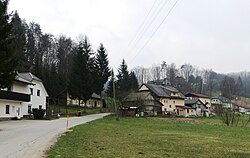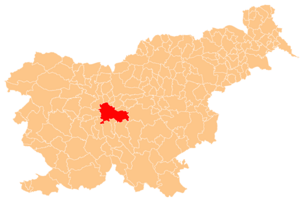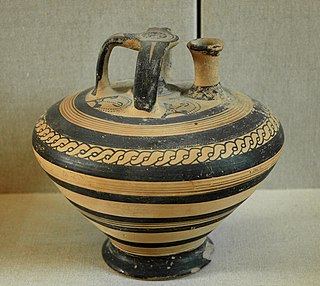
Ivančna Gorica is a settlement and a municipality in central Slovenia. It is part of the traditional region of Lower Carniola and is now included in the Central Slovenia Statistical Region.

Notranje Gorice is a settlement in the Municipality of Brezovica in central Slovenia. It lies in the marshlands south of the capital Ljubljana. The municipality is part of the traditional region of Inner Carniola and is now included in the Central Slovenia Statistical Region. It includes the hamlets of Pri Ljubljanici, Pod Kamnom, Vrtovi, Gmajna, and Žabnica.

Besnica is a settlement in the hills east of Ljubljana in central Slovenia. It belongs to the City Municipality of Ljubljana. It was part of the traditional region of Lower Carniola and is now included with the rest of the municipality in the Central Slovenia Statistical Region. The stream that runs through the settlement is also called the Besnica. It is a tributary of the Ljubljanica, which it joins at Podgrad. Besnica includes the hamlets of Derčar, Jančar, Pečar, Prek, Špan, and Tomaž.

Češnjica is a settlement in central Slovenia. It lies in the hills east of the capital Ljubljana and belongs to the Ljubljana Urban Municipality. It was part of the traditional region of Lower Carniola and is now included with the rest of the municipality in the Central Slovenia Statistical Region.
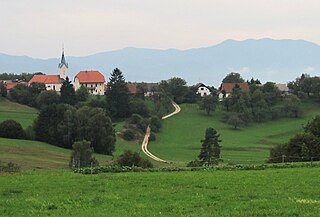
Mali Lipoglav is a settlement in central Slovenia. It lies in the hills southeast of the capital Ljubljana and belongs to the City Municipality of Ljubljana. It was part of the traditional region of Lower Carniola and is now included with the rest of the municipality in the Central Slovenia Statistical Region.

Mali Vrh pri Prežganju is a small settlement in the hills east of Ljubljana, the capital of Slovenia. It belongs to the City Municipality of Ljubljana. The area was part of the traditional region of Lower Carniola and is now included with the rest of the municipality in the Central Slovenia Statistical Region.

Podgrad is a settlement east of the capital Ljubljana in central Slovenia. It belongs to the City Municipality of Ljubljana. It lies on the right bank of the Ljubljanica River at the entrance into the Besnica Valley. The Ljubljanica in turn flows into the Sava immediately northeast of the settlement core. The railway line from Ljubljana to Zidani Most runs through the settlement. The area was part of the traditional region of Lower Carniola and is now included with the rest of the municipality in the Central Slovenia Statistical Region.

Podlipoglav is a village in the City Municipality of Ljubljana in central Slovenia. The area was part of the traditional region of Lower Carniola and is now included with the rest of the municipality in the Central Slovenia Statistical Region.

Šentpavel is a settlement in the hills southeast of the capital Ljubljana in central Slovenia. It belongs to the City Municipality of Ljubljana. It was part of the traditional region of Lower Carniola and is now included with the rest of the municipality in the Central Slovenia Statistical Region.

Toško Čelo is a dispersed settlement on the slope of the hill known as Tošč Face, part of the Polhov Gradec Hills, west of the capital Ljubljana in central Slovenia. The area was part of the traditional region of Upper Carniola and is now included with the rest of the municipality in the Central Slovenia Statistical Region. It belongs to the City Municipality of Ljubljana.
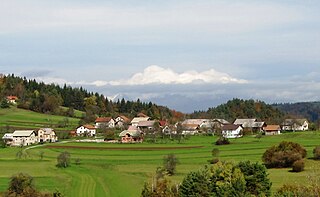
Veliki Lipoglav is a small settlement in the hills southeast of Ljubljana in central Slovenia. It belongs to the City Municipality of Ljubljana and is part of the traditional region of Lower Carniola. It is now included with the rest of the municipality in the Central Slovenia Statistical Region.

Zgornja Besnica is a settlement in central Slovenia. It lies in the hills east of the capital Ljubljana and belongs to the City Municipality of Ljubljana. Traditionally it was part of the Lower Carniola region. It is now included with the rest of the municipality in the Central Slovenia Statistical Region.

Zgornja Jevnica is a dispersed settlement in the hills above Jevnica in the Municipality of Litija in central Slovenia. Traditionally the area was part of Lower Carniola and is now included with the rest of the municipality in the Central Sava Statistical Region. The settlement includes the hamlets of Mala Noga and Mala Dolga Noga.

Gajniče is a small settlement just southwest of Šmarje–Sap in the Municipality of Grosuplje in central Slovenia. The entire municipality is included in the Central Slovenia Statistical Region. The area is part of the historical region of Lower Carniola.

Podgorica pri Šmarju is a small settlement just north of Šmarje–Sap in the Municipality of Grosuplje in central Slovenia. The area is part of the historical region of Lower Carniola and is now included in the Central Slovenia Statistical Region.

Bukovica pri Litiji is a small settlement in the Municipality of Šmartno pri Litiji in central Slovenia. It lies in the hills east of Šmartno in the historical region of Lower Carniola. The municipality is now included in the Central Slovenia Statistical Region.

Spodnji Kašelj is a formerly independent settlement in the eastern part of the capital Ljubljana in central Slovenia. It is a compact settlement above the left bank of the Ljubljanica River between Zgornji Kašelj and Zalog. It was part of the traditional region of Upper Carniola and is now included with the rest of the municipality in the Central Slovenia Statistical Region.

Dobrava pri Črnučah is a formerly independent settlement in the northern part of the capital Ljubljana in central Slovenia. It is a dispersed settlement on both sides of the road from Ljubljana to Domžale. It was part of the traditional region of Upper Carniola and is now included with the rest of the municipality in the Central Slovenia Statistical Region.

Jerova Vas is a formerly independent settlement in the northern part of the town of Grosuplje in central Slovenia. It belongs to the Municipality of Grosuplje. It was part of the traditional region of Lower Carniola and is now included with the rest of the municipality in the Central Slovenia Statistical Region.

Podgora is a former settlement in central Slovenia in the northwest part of the capital Ljubljana. It belongs to the Šentvid District of the City Municipality of Ljubljana. It was part of the traditional region of Upper Carniola and is now included with the rest of the municipality in the Central Slovenia Statistical Region.
